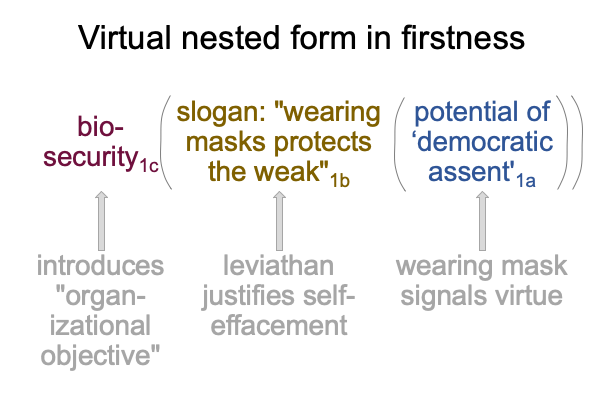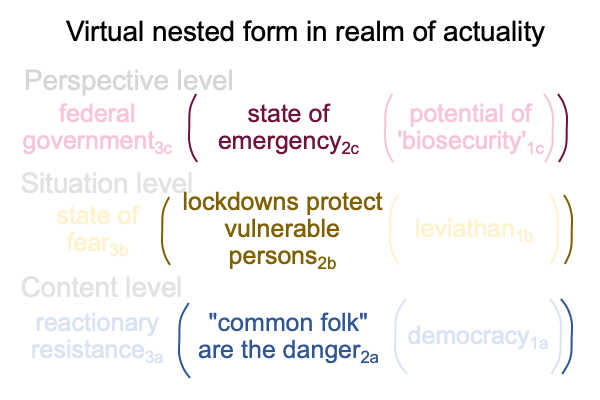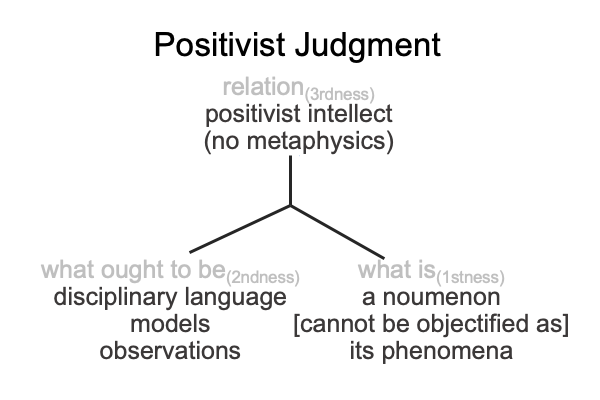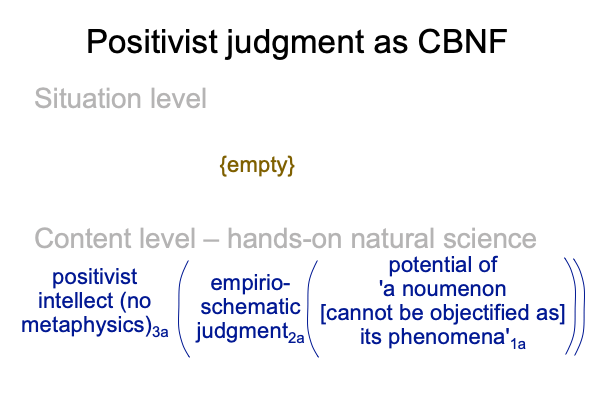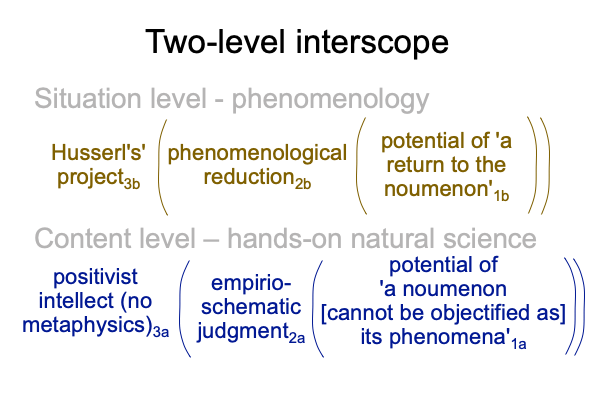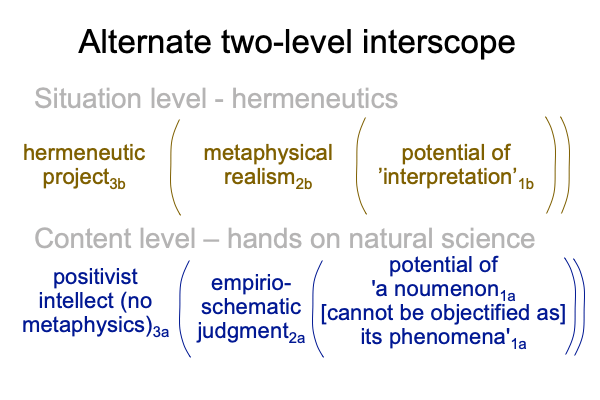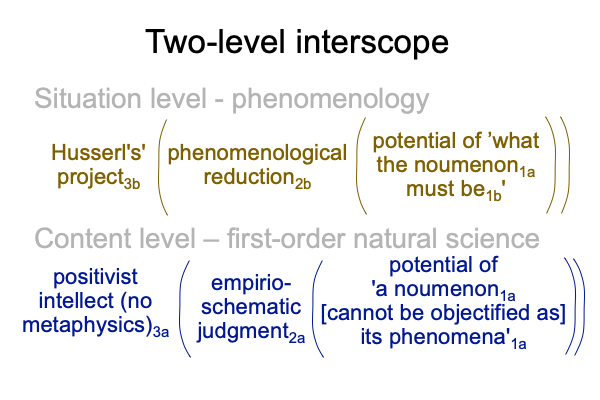Looking at Matthew Crawford’s Essay (2022) “Covid Was Liberalism’s Endgame” (Part 8 of 10)
0040 A suprasovereign liberal civic religion dies with the unraveling of the individual2, defined as the intersection of commonsense2V and vulnerabilities2H.
In the normal context of technocratic progressivism3, a mystery2cC unravels into a two-level interscope. But, the unraveled individual2b does not make sense to humans in their natural… um… state3a.
0041 The two-level interscope characterizes sensible thought. However, the emotional judgments2cA, phantasms2bA, impressions2aA and feeling2aA of vulnerable persons is more like a religious experience2b, compared to an exercise in commonsense2a.
Yet, this religious experience2b is sensible in the normal context of a state of fear3b, where the leviathan has the potential to declare a state of exception1b. Consequently, in technocratic progressivism, the perspective levelc does not come into play.
Or, at least, itc appears not to.
0042 Here is a diagram.

0043 How does Locke’s human nature3a become regarded as sociopathological3a?
How does Hobbes’s state of nature3b manifest as a state of fear3b?
The original normal contexts do not seem exceptional.
The latter normal contexts do.
0044 Crawford writes that, in the 1990s, social scientists dispose with the “rational actor” model of human behavior. Cognitive psychology (and evolutionary psychology) sees humans as unconsciously employing evolved cognitive modules.
Along the same lines, bureaucratic criteria1b, such as performance metrics2b, replace commonsense judgments2a. Examples include so-called “evidence-based medicine”, standardized tests and curricula, and self-driving automobiles. These policies are designed to protect vulnerable persons2b, given the sociopathic (unconsciously employing evolved cognitive modules) nature of doctors, teachers and ahem… people who drive.
0045 Here is a picture of what human nature transitions to under the normal context of technocratic progressivism3. Evolutionary psychology informs us that human nature is full of sociopathic tendencies, due to our “selfish genes”. Cognitive psychology models human thought processes as circuits of unconscious modules, working in tandem.

Commonsense2a gets redefined.
Some call this progress. Others call it, “dehumanization”.
0046 During the 2000s, theatrical political initiatives introduce a perspective-level actuality2c, the state of exception. Astate of exception is declared in order to confront emergent vulnerabilities2b. These declarations do not need to satisfy commonsense2a, in the old sense of the word, because “commonsense” has been redefined. In fact, the original concept of human nature3a has been narrowed by scientific inquiry into a suite of sociopathic tendencies3a.
Technocratic progressivism3 dons the mantle of science in its pursuit to remake humans1.
0047 Here is a picture of the transitioned unraveled individual.
Figure 19
0048 Of course, the most recent theatrical incident coincides with a complex sequence of conjunctions among Jupiter, Saturn and Pluto in the Houses of Capricorn and Aquarius. See Razie Mah’s blogs for March and April 2020. A novel coronavirus (the common cold) rages through Wuhan after the New Years Festival celebrating the Year of the Rat, then spreads to the world. The virus’s progress is marked by the technocratic implementation of a polymerase chain reaction test.
Never mind claims that the test also shows positive for influenza. Hospitals in China and Italy are overwhelmed with old people in the middle of winter suffering complications and the doctors are calling for experts to save them with medical protocols. Corporate television reports the breaking news.
Disease translates into data. Data feeds panic2b.



